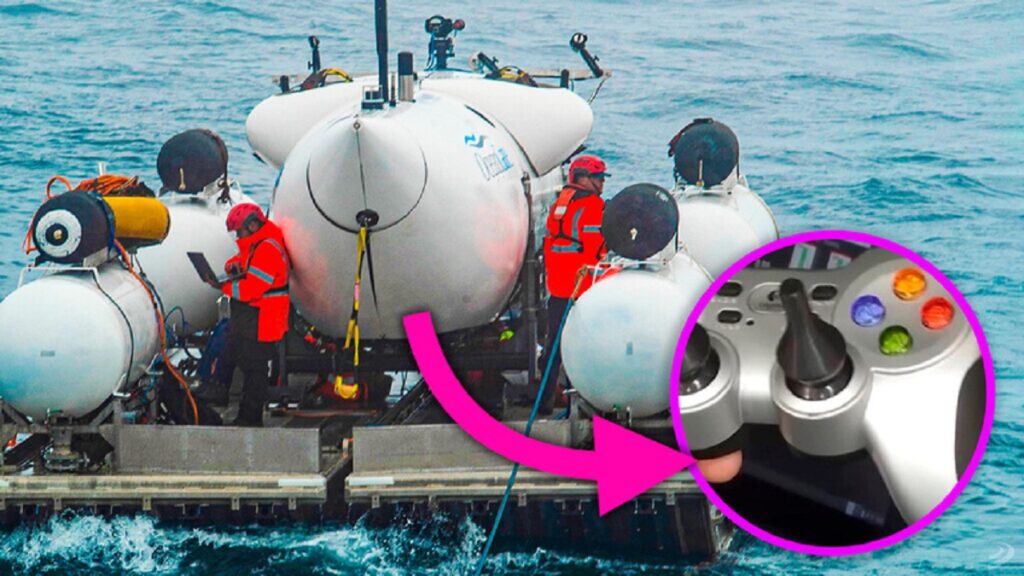In what could easily be mistaken for a bizarre twist in a sci-fi movie, the recent disappearance of a submersible during a Titanic exploration mission has raised eyebrows across the globe. What’s even more astonishing is the revelation that this submersible was guided by a game controller—specifically, a $40 Logitech model. The details surrounding this tragedy are still unfolding, but the circumstances of the expedition are already raising serious questions about the safety protocols and equipment used in such high-risk adventures.
A Deadly Dive Into History
The submersible in question was tasked with taking a group of tourists on a once-in-a-lifetime voyage to the remains of the Titanic, the legendary shipwreck that continues to captivate the world. The passengers, including two millionaires, a pilot, and an explorer, were paying a hefty sum of $250,000 for this unique experience. However, things took a disastrous turn when communication with the submersible was abruptly lost, and a search operation failed to yield any results.
But as the investigation into this unfortunate event unfolded, something strange came to light: the submarine was being controlled by a gaming device—a Logitech F710 wireless controller. This was not your average high-tech, cutting-edge navigation system; rather, it was a model that had been released way back in 2005. A few sharp-eyed observers on social media quickly pointed out this odd detail, which sparked further scrutiny.
The $40 Controller That Guided a $250,000 Journey

The Logitech F710 is known for its dual vibration feedback, a classic button layout, and its ability to connect to a PC. In its prime, it was marketed as an affordable and reliable controller for gaming. However, it’s far from the kind of sophisticated equipment one might expect to be used in a high-stakes submersible mission, especially one venturing 12,500 feet below the ocean’s surface to the wreckage of the Titanic.
A Reddit user even shared a video, showing how the controller had been adapted to guide the submersible, with custom levers replacing the standard joystick. What’s even more surprising is the fact that this device, priced around $40 (though it could often be found on sale for as little as $39.99), was essentially steering a sub designed for some of the most treacherous waters on Earth.
While the use of such an outdated piece of tech has caused significant concern, it also raises larger questions about safety standards and technology choices in the field of underwater exploration. How could something so vital be left in the hands of such a seemingly rudimentary tool?
The Price of a Titanic Journey: $250,000 for a $40 Controller
Despite the astonishing price tag, the journey to explore the Titanic’s remains has become a bucket-list adventure for the wealthy. But the story behind the Titanic sub’s disappearance is a grim reminder of the risks involved. The use of a simple game controller to operate a submersible meant to handle extreme depths seems irresponsible, especially considering the technology available today.
This tragedy underscores the unpredictability and danger of underwater exploration, particularly with high-tech expeditions that are marketed as safe, thrilling experiences for wealthy adventurers. Even with advanced technology, there are still inherent risks to diving into these depths, and when low-tech solutions are employed in critical scenarios, the outcome can be catastrophic.
The Fallout: What Does This Mean for Future Expeditions?
The media have been closely following the story, with some drawing comparisons to the Titanic disaster itself, where human error and technological limitations contributed to an unimaginable loss of life. While the submersible’s disappearance is still under investigation, the use of a gaming controller as a navigation tool raises some serious concerns about the standards and decisions made in this type of exploration.
The link between this disappearance and a $40 controller highlights the gaps in technology and safety protocols in the submersible industry. Questions surrounding the equipment standards, crew training, and risk assessments will surely continue to haunt the sector moving forward. As more details emerge, it’s likely that the incident will force a reevaluation of how underwater explorations—especially those aimed at wealthy tourists—are conducted.
A Lesson in Preparedness and Technology in High-Risk Adventures
For the submersible industry, this tragic event will likely serve as a catalyst for change. While the excitement around deep-sea exploration is palpable, it’s clear that high-tech adventures must be supported by high-quality, reliable, and safe technology. The message is clear: cutting corners with technology and safety in such risky environments can have deadly consequences.
As this story continues to develop, the public is left to wonder: how much of the adventure should be left to technology, and how much should be guided by professional expertise and caution? This is an unfortunate reminder that, sometimes, even the smallest, seemingly harmless choices can have devastating consequences.




